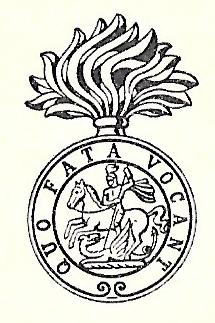The Royal Northumberland Fusiliers, British Army: Difference between revisions
No edit summary |
Knorrepoes (talk | contribs) m (Text replacement - "Category:Military heraldry of the United Kingdom " to " {{uk}} {{media1}} Category:Military heraldry of the United Kingdom ") |
||
| Line 15: | Line 15: | ||
[[Literature]]: Image from Regimental Badges by T.J. Edwards | [[Literature]]: Image from Regimental Badges by T.J. Edwards | ||
{{uk}} | |||
{{media1}} | |||
[[Category:Military heraldry of the United Kingdom]] | [[Category:Military heraldry of the United Kingdom]] | ||
[[Category:Army heraldry]] | [[Category:Army heraldry]] | ||
Revision as of 08:47, 6 April 2023
| Heraldry of the World |
| British heraldry portal Civic heraldry of the United Kingdom |
|
THE ROYAL NORTHUMBERLAND FUSILIERS, BRITISH ARMY
History: Raised in 1674 in the service of the Prince of Orange as The Irish Regiment. Placed on the English Establishment in 1685, designated in 1751 as 5th Foot. In 1968 amalgamated with The Royal Fusiliers (City of London Regiment), British Army, The Royal Warwickshire Fusiliers, British Army, The Lancashire Fusiliers, British Army to form The Royal Regiment of Fusiliers, British Army.
Official blazon
A grenade in gilt , or gilding metal; on the ball of the grenade in silver plate a circle inscribed Quo fata vocant (Whither the fates call) and within the circle St George killing the Dragon.
Origin/meaning
Contact and Support
Partners:
Your logo here ?
Contact us
© since 1995, Heraldry of the World, Ralf Hartemink 
Index of the site
Literature: Image from Regimental Badges by T.J. Edwards
| Heraldry of the World |
| British heraldry portal Civic heraldry of the United Kingdom |
|












